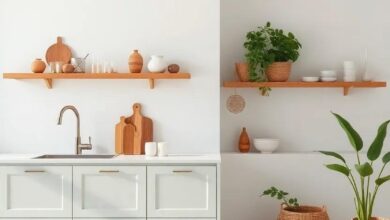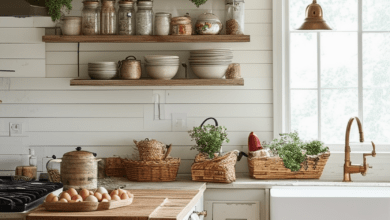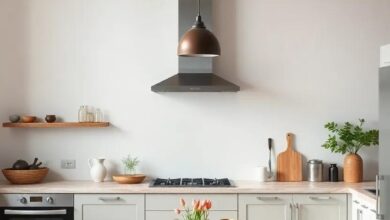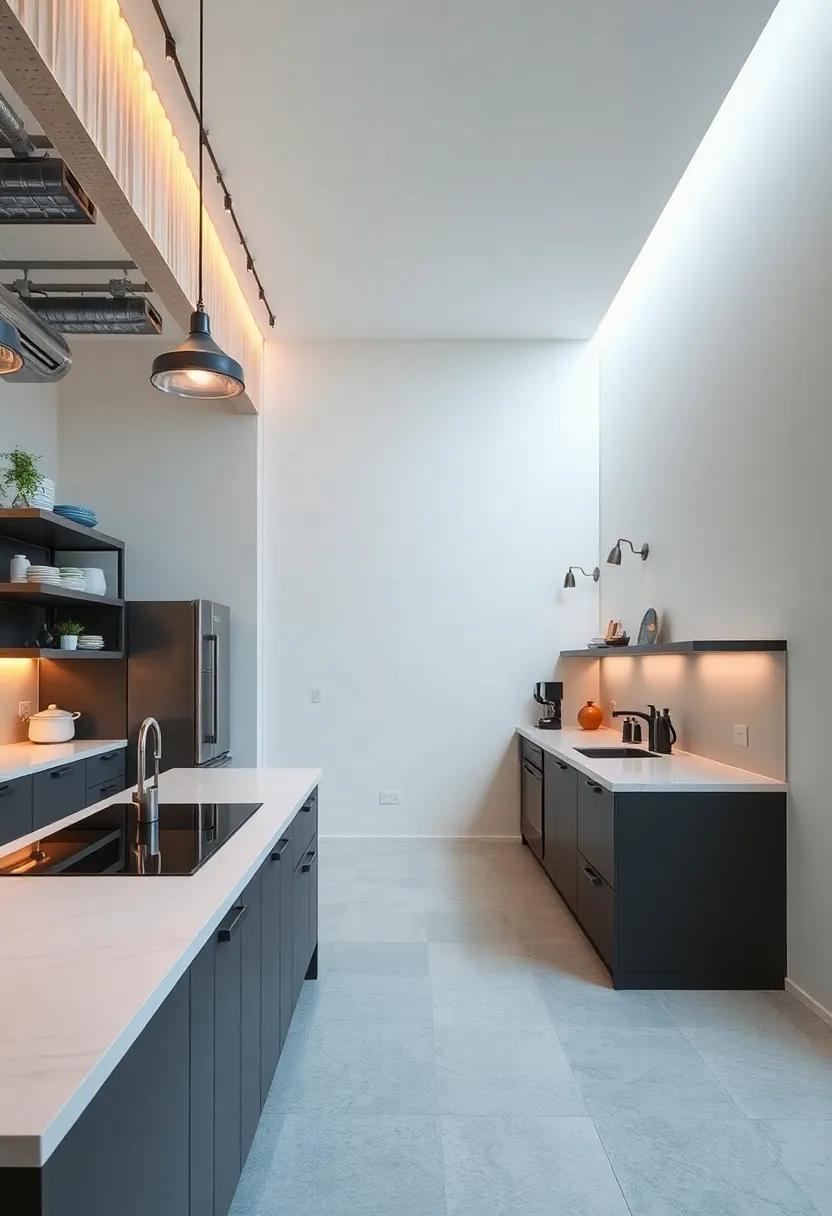
Transforming Spaces: The Art of Industrial Kitchen Interior Design
In the heart of every home or bustling restaurant lies a space that serves not just as a hub for culinary creativity, but as the very essence of social gatherings—the kitchen. in recent years, a distinctive design trend has emerged, shaping the way we envision and utilize these vital spaces: industrial kitchen interior design. With its raw materials, open layouts, and functional aesthetics, this style marries form and function seamlessly, inviting both functionality and character into the heart of culinary operations. From the rich textures of weathered wood and stainless steel to the striking contrasts of exposed brick and sleek surfaces, industrial design captures a unique spirit of innovation and practicality. In this article, we will explore the transformative power of industrial design in kitchens—examining its roots, key elements, and the ways it continues to inspire creativity and efficiency in modern culinary environments. Whether you are a homeowner looking to revamp your kitchen or a professional seeking inspiration for your next commercial project, join us on a journey to discover the art of creating a space that is as much about style as it is about substance.
Embracing Raw Materials with Unfinished Textures in Kitchen design
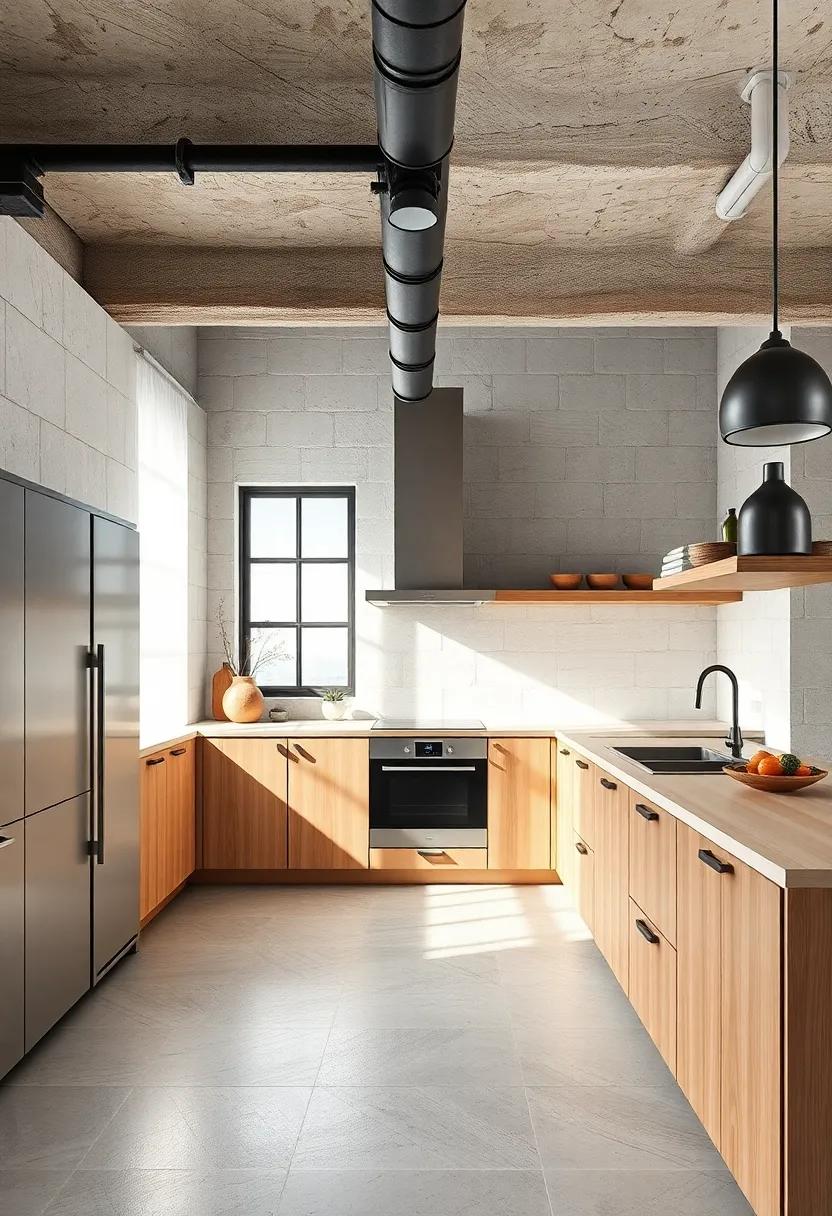
Incorporating raw materials into kitchen design not only channels the spirit of industrial aesthetics but also fosters an atmosphere of authenticity and warmth. textures such as unfinished wood,exposed brick,and rugged metals create a tactile journey that engages the senses. Elements like these can be juxtaposed against sleek appliances and polished surfaces, offering a captivating contrast that emphasizes the uniqueness of each piece. Here are some popular materials to consider:
- Reclaimed Wood: Adds history and character.
- Concrete: A robust option that is versatile and modern.
- Steel: Durable and stylish,perfect for fixtures and countertops.
- Brick: Provides a classic yet contemporary feel with a rugged charm.
To further enhance the kitchen’s atmosphere, a mix of textures can transform the overall design, inviting both functionality and a rustic elegance. Incorporating items such as open shelving with raw edge finishes or hardware featured in their natural state can create visual intrigue. the interaction between these materials allows for a balance of creativity and practicality, ensuring that the space is not only beautiful but also livable. Below is a simple guide to combining textures effectively:
| Material | Usage | Texture Description |
|---|---|---|
| Reclaimed Wood | Counters & Shelves | Rough, with visible grains and knots. |
| Exposed Brick | walls | Uneven, with a warm, rustic finish. |
| Metal Accents | Hardware & Fixtures | Cool, smooth, and sometimes brushed for depth. |
The Balance of Functionality and Aesthetics in Industrial Kitchens
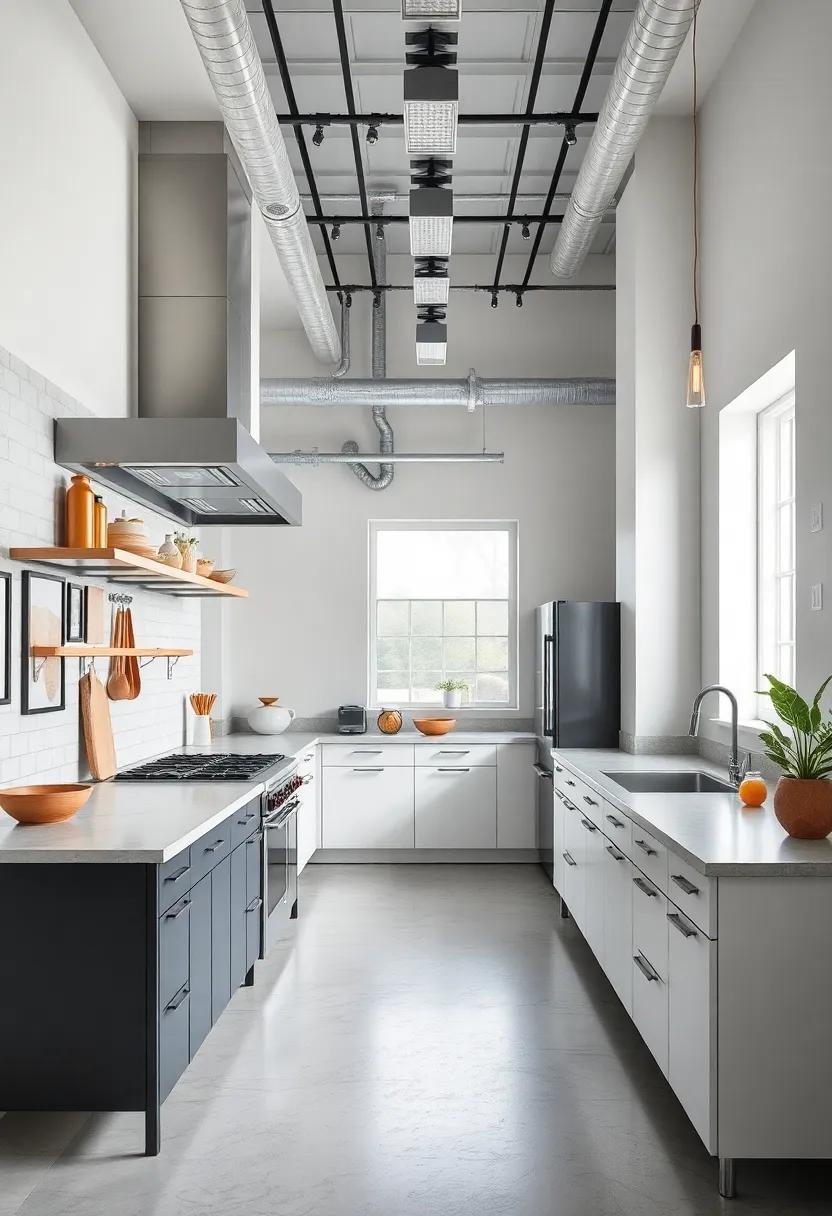
in crafting industrial kitchens,the synergy between functionality and aesthetics is paramount.These spaces must not only serve culinary demands but also reflect a distinct style that resonates with the ethos of modern living. key considerations include:
- Material Selection: Choosing durable materials such as stainless steel, reclaimed wood, and polished concrete that enhance both utility and visual appeal.
- Spatial Planning: Designing workflows that maximize efficiency, ensuring that every element, from prep stations to storage, is thoughtfully placed.
- Lighting Design: Incorporating practical and ambient lighting that highlights the kitchen’s industrial charm while providing the necessary brightness for cooking tasks.
While functionality takes center stage, the aesthetic value reinforces the kitchen’s identity within a home or commercial setting.Integrating striking visual elements can transform a utilitarian space into a stylish hub. Consider the use of statement fixtures and vintage accents that draw attention, creating focal points amidst the industrial backdrop. A carefully curated palette,blending muted tones with splashes of color,can evoke warmth and personality. The balance achieved not only optimizes usability but also enhances the overall experience of the space, making it a place where cooking becomes a joyous and visually enriching endeavor.
Creative Use of Open Shelving for Storage and Display in Cooking Spaces
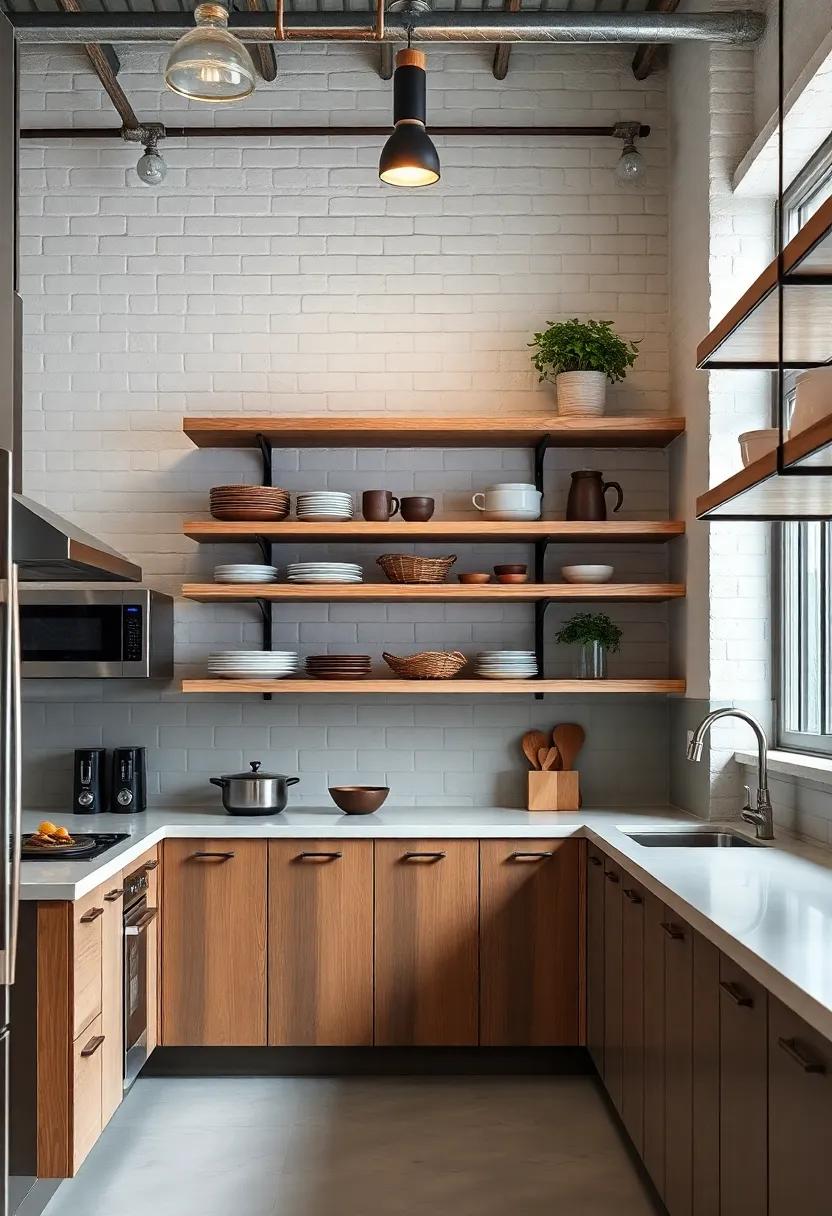
Open shelving has become a hallmark of modern kitchen design, merging functionality with aesthetic appeal. Embracing this trend allows homeowners to showcase their culinary collections while maintaining easy access to essential items. Consider incorporating the following elements for a truly personalized touch:
- Mix and match materials: Combine wood, metal, and glass shelves to create a dynamic visual experience.
- Display everyday items: Use colorful ceramics or artisanal jars as decorative pieces.
- Add lighting: Undercabinet LED strips can highlight your favorite crockery or herbs in glass jars.
Another innovative approach to open shelving is utilizing vertical space creatively. by installing shelves that ascend towards the ceiling, you draw the eye upwards, creating an illusion of a larger area. Here are some ingenious ideas to optimize storage:
- Layer items: Stack plates or bowls to maximize surface area and facilitate selection.
- incorporate hooks: Attach hooks beneath shelves for hanging utensils, adding both practicality and interest.
- Seasonal decor: Rotate items based on seasons or holidays to keep the space fresh and inviting.
Innovative Lighting Solutions to Enhance the Industrial Kitchen Atmosphere
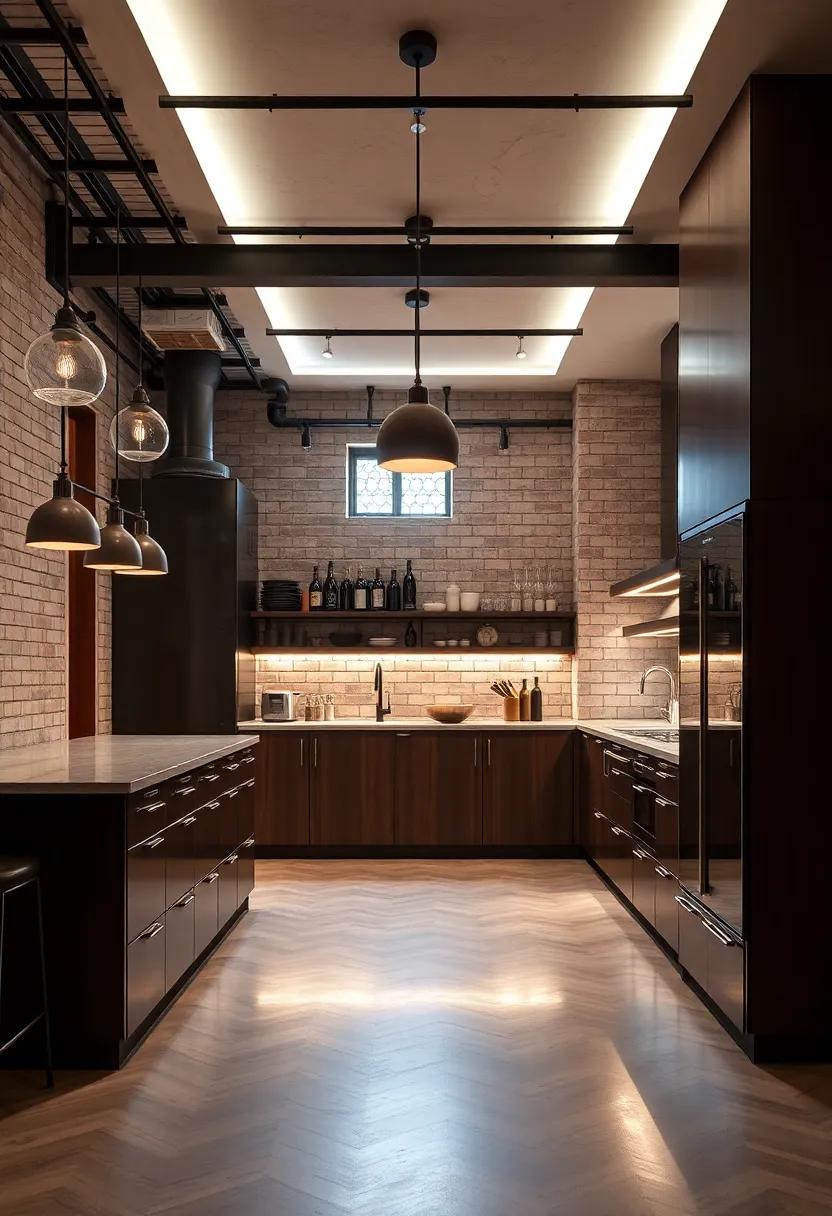
In the realm of industrial kitchens, lighting is not merely a functional requirement; it is a pivotal aspect that influences both mood and productivity. Innovative lighting solutions such as LED strip lights, pendant fixtures, and task lighting can dramatically transform the ambiance of these bustling spaces. By strategically layering different types of lighting, chefs and kitchen staff can enjoy enhanced visibility while also creating an inviting atmosphere. Consider the incorporation of adjustable fixtures that allow for ambiance control, enabling various levels of brightness for different times of the day or tasks at hand.
Utilizing elements like color temperature can play a critical role in defining the kitchen surroundings. Warmer tones foster a sense of comfort and collaboration, while cooler temperatures can stimulate focus and efficiency. Below are key lighting features to consider for your industrial kitchen design:
- Energy Efficiency: Utilizing LED technology reduces energy consumption and operational costs.
- Adjustable Brightness: Dimmable fixtures for varied tasks and times.
- Accent Lighting: Highlighting specific areas, like prep stations or dining areas, to draw attention.
| Lighting Type | Benefits |
|---|---|
| Pendant Lights | Adds style and provides focused illumination. |
| LED Strip Lights | Versatile usage, enhances visual appeal with mood lighting. |
| Task Lights | Ensures functional clarity at workstations. |
Incorporating Bold Color Schemes for Vibrant Industrial Kitchen Vibes
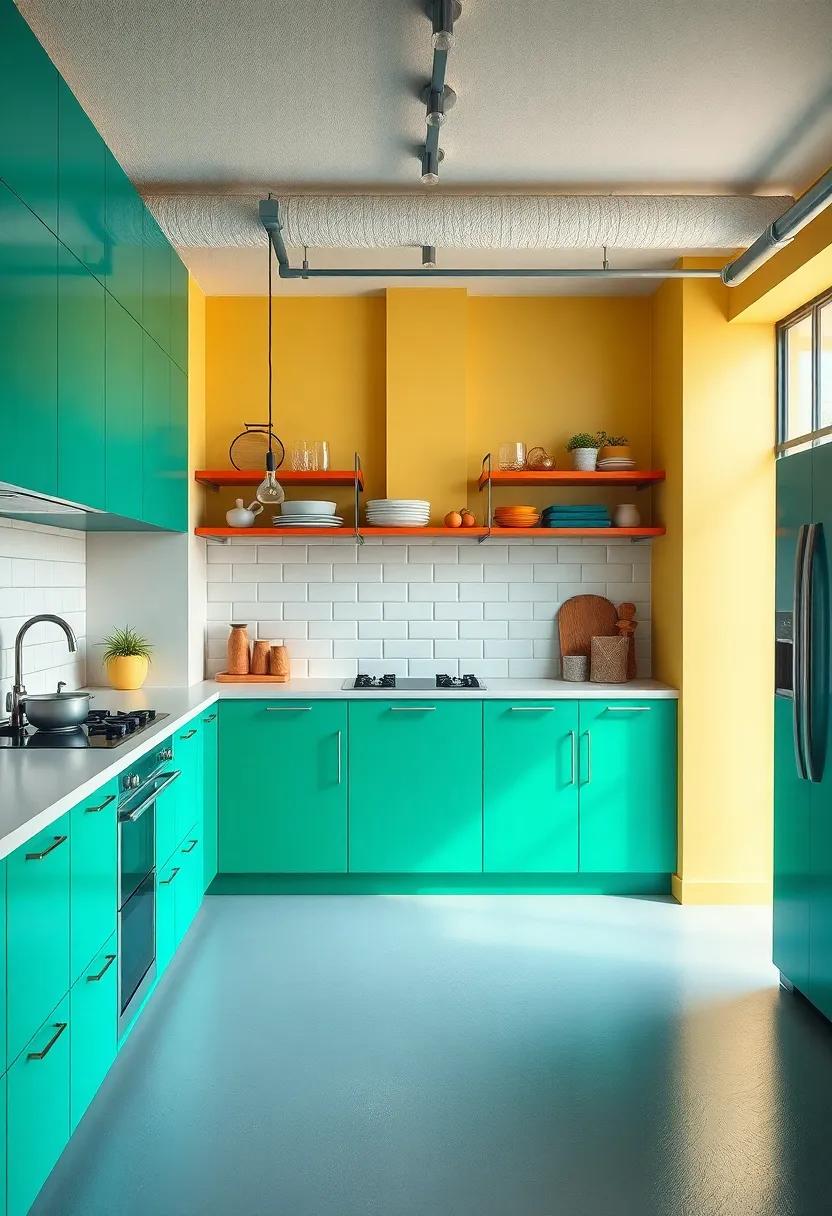
In the realm of industrial kitchen design, the use of bold colors can create an energizing atmosphere that exudes creativity and passion.By incorporating vibrant hues such as deep reds, rich blues, or shining yellows, you can invigorate the space while maintaining the raw charm of industrial materials like steel and concrete. consider creating focal points through paint on one wall, or introducing vibrant accessories that stand out against a neutral backdrop. This approach not only adds visual interest but also establishes a dynamic ambiance that encourages culinary exploration.
To effectively balance bold colors with the industrial aesthetic, consider pairing striking shades with robust textures. A thoughtful selection of materials—such as rusted metals, exposed brick, and reclaimed wood—can harmoniously complement daring colors, ensuring the space feels cohesive rather than chaotic. Here are some impactful combinations to consider:
| Bold Color | Complementary Material |
|---|---|
| Crimson Red | Rusty Copper Accents |
| Electric Blue | Polished Steel Surfaces |
| Lemon Yellow | Reclaimed Wood Shelving |
Utilizing Reclaimed Wood for a Rustic Touch in Modern Kitchens
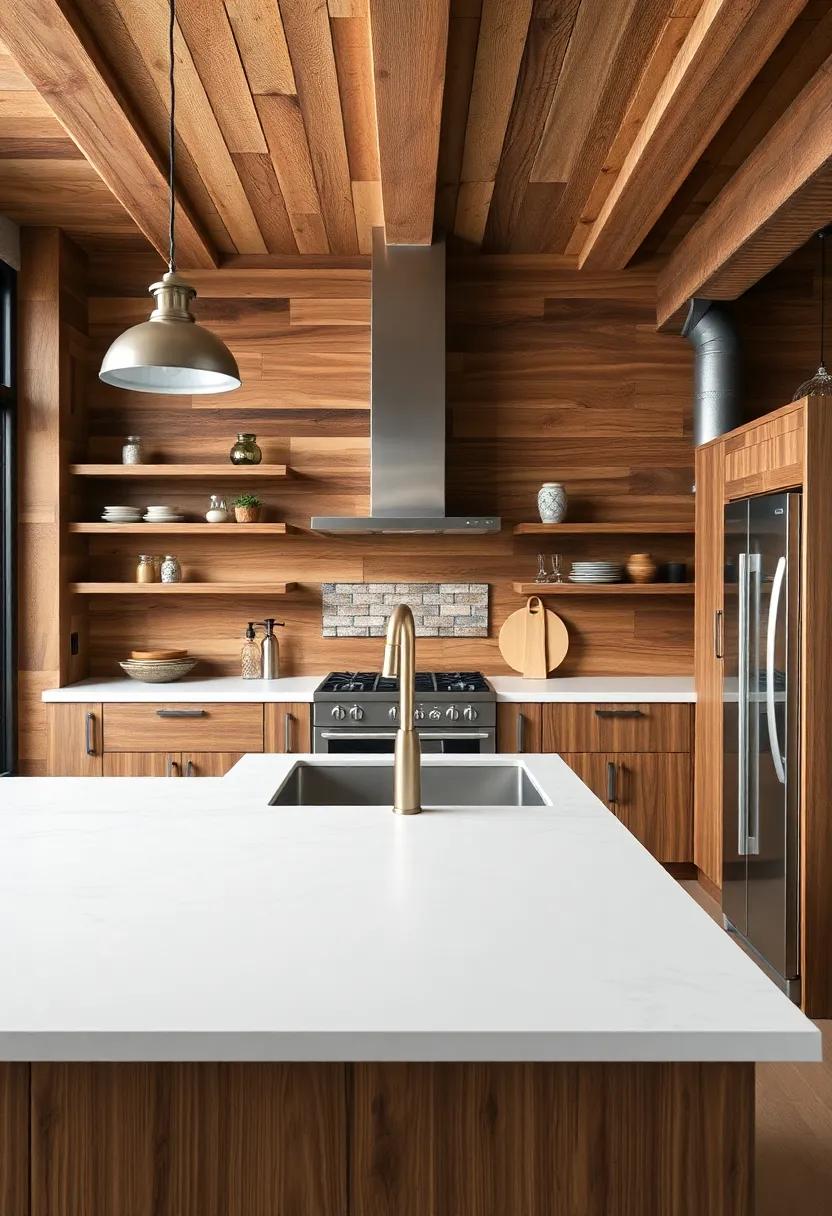
Incorporating reclaimed wood into modern kitchens not only adds a unique aesthetic but also brings a rich history into the design.Each piece of reclaimed wood tells a story, showcasing its wear and character, wich can beautifully contrast with sleek, contemporary elements. Consider using reclaimed wood for:
- Cabinetry: Transform standard units into customized masterpieces.
- Countertops: Create warm and inviting surfaces that invite culinary creativity.
- open Shelving: Display decorative items and vintage dishware, merging functionality with style.
- Accent Walls: Introduce texture and warmth that soften the industrial feel of stainless steel and concrete.
This eco-friendly choice not only contributes to sustainability but also enhances the overall ambiance with its rustic charm. In the kitchen, where family and friends gather, reclaimed wood can serve as a centerpiece, inviting conversation and connection. Pair it with modern appliances and minimalist decor to strike a balance between old and new, allowing the beauty of the wood to shine against a backdrop of clean lines and bright finishes.
| Type of Wood | Characteristics | Ideal Use |
|---|---|---|
| Barn Wood | Weathered, rich textures | Counters, tabletops |
| Teak | Durable, water-resistant | Cabinets, shelves |
| Pine | lightweight, easily accessible | Accent pieces, wall paneling |
Strategic Layouts That Maximize Efficiency in Culinary Spaces

Designing culinary spaces involves a delicate balance of functionality and aesthetics. The layout of an industrial kitchen can significantly enhance efficiency,ensuring that chefs and kitchen staff can move freely and work seamlessly. When considering the arrangement, triangle workflow—the relationship between the refrigerator, sink, and stove—should be a primary focus. This minimizes unnecessary movement and allows for smoother meal planning. Additionally, zoning the kitchen into specific areas for prep, cooking, and plating can further streamline the operation. Consider integrating elements such as mobile stations and open shelving to maximize productivity and accessibility.
To optimize space usage, leverage smart storage solutions and multi-functional equipment. For example, vertical racks can hold pots and pans, freeing up valuable counter space, while foldable worktables can adapt to varying tasks. Furthermore, arranging equipment according to the frequency of use can lead to an organized and efficient setup. Below is a simple table highlighting key elements that can contribute to maximizing efficiency in culinary layouts:
| Element | description |
|---|---|
| Work Zones | Designated areas for specific tasks (prep, cooking, plating). |
| Storage Solutions | Creative use of vertical space and multi-functional units. |
| Triangle Workflow | Optimal placement of fridge, sink, and stove for efficiency. |
| mobility | Incorporating portable stations and equipment. |
Artistic Wall Decor That Celebrates Culinary Heritage and Craftsmanship
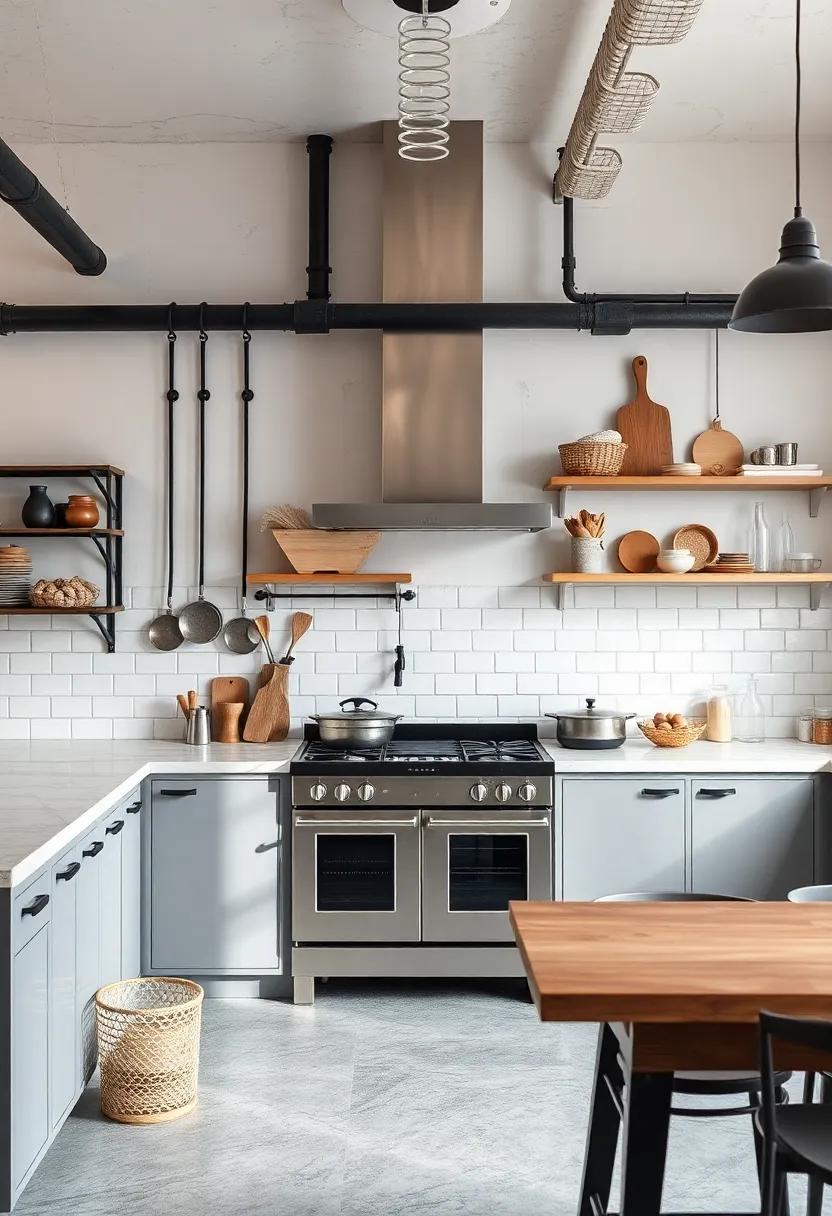
In the realm of industrial kitchen design, artistic wall decor plays a pivotal role in reflecting the rich tapestry of culinary heritage and the meticulous craftsmanship behind every dish. Incorporating elements such as hand-painted murals, vintage kitchen tools, and framed recipes can instantly transform a bland wall into a narrative space, celebrating not just the art of cooking but the culture that surrounds it. This artistic approach transcends mere decoration; it becomes a conversation starter, inviting guests to engage with the history and traditions that shape their dining experience.
To achieve a harmonious balance between functionality and artistic expression, consider integrating decorative pieces that resonate with both culinary and aesthetic values. Here are some ideas to elevate your kitchen walls:
- Rustic Wooden Shelves: Showcase heirloom cookbooks and prized kitchenware.
- Custom Tile Art: Design tiles that reflect local culinary traditions.
- Hanging Herb Gardens: Merge functionality with decor by displaying fresh herbs in artistic pots.
- Enamel Signs: Feature vintage signs that celebrate local food culture.
| Decor Element | Impact |
|---|---|
| Murals | Bring a visual story to life, evoking emotions tied to food heritage. |
| Framed Kitchen Tools | Serve as historical artifacts while showcasing craftsmanship. |
| Cultural Maps | Highlight regional cuisines and celebrate global culinary diversity. |
Sustainable Practices in Industrial Kitchen Design and Renovation
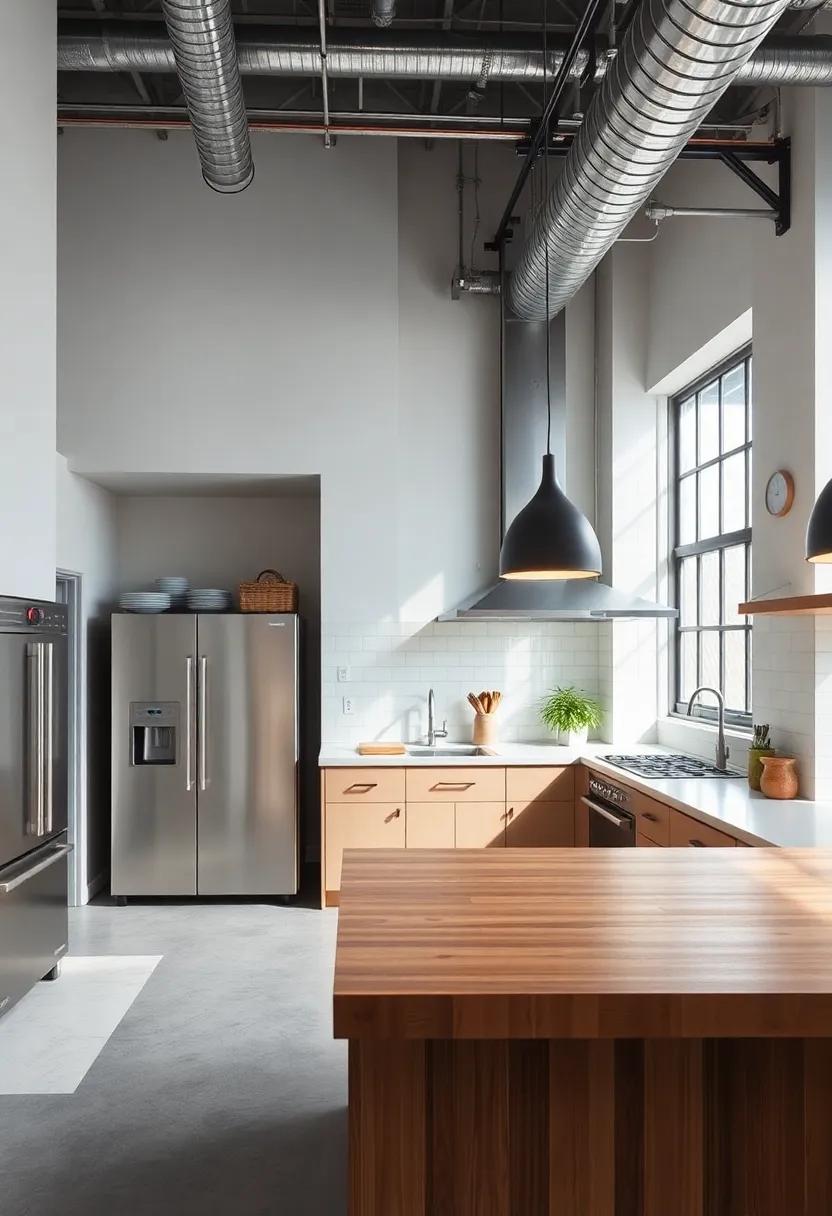
Incorporating eco-friendly elements into industrial kitchen design not only enhances the overall aesthetic but also promotes efficiency and sustainability.By utilizing reclaimed materials such as salvaged wood and recycled metal, designers can create stunning surfaces and fixtures while keeping the environmental footprint to a minimum. Energy-efficient appliances now come in sleek designs and high performance, making them a staple in modern kitchens. Additionally, including natural lighting through strategically placed windows or skylights can significantly reduce the reliance on artificial light, further lowering energy consumption.
The integration of smart technology also plays a crucial role in promoting sustainable practices. By adopting IoT-enabled appliances, kitchens can operate at optimal levels, adjusting usage based on demand. water-saving fixtures and systems also contribute to a more sustainable kitchen by minimizing waste with devices like touchless faucets or dual-flush toilets. Below is a simple table showcasing sustainable material options alongside their benefits:
| Material Type | Benefits |
|---|---|
| Recycled metal | Durable, reduces mining waste |
| Bamboo | Fast-growing, renewable resource |
| Low-VOC Paints | Better air quality, safer for occupants |
Integrating High-Tech Appliances into Vintage-Inspired Spaces
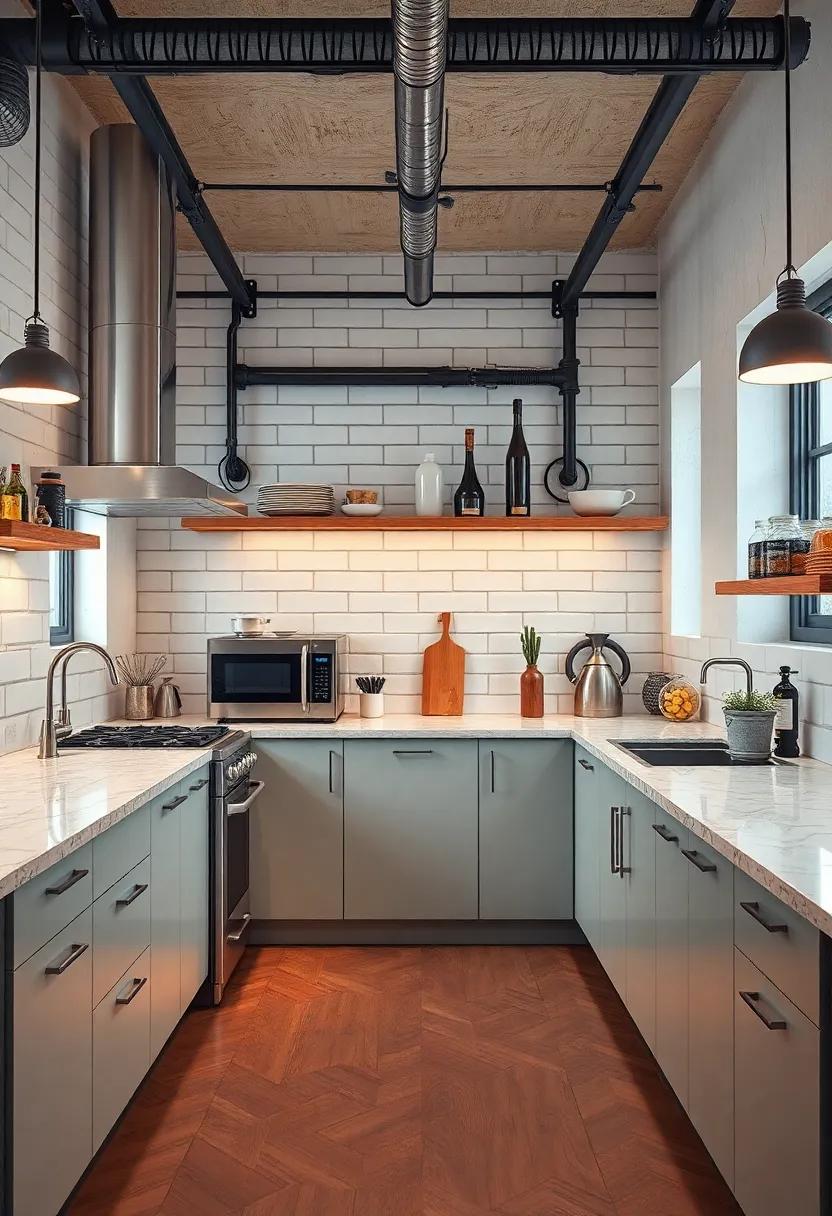
When blending state-of-the-art technology with the charm of vintage aesthetics,a careful selection of appliances can create a seamless harmony. Choosing high-tech appliances that maintain a retro appearance can ensure that modern functionality does not overpower the nostalgic appeal of your space. Consider incorporating features such as:
- Retro-style refrigerators that provide the latest energy efficiency while evoking a 1950s diner vibe.
- Smart ovens with intuitive interfaces, designed to look like classic ranges yet equipped with advanced cooking capabilities.
- Dishwashers with customizable panels that can be finished in vintage colors to match cabinetry.
Moreover, the integration of smart home technology can enhance the user experience in a manner that feels both luxurious and vintage.By opting for appliances with voice activation and app connectivity, you can enjoy modern conveniences without sacrificing style. To better illustrate how these appliances can fit into a vintage design, refer to the table below for ideas on color palettes and appliance styles:
| Appliance | Vintage Style | Modern Feature |
|---|---|---|
| Refrigerator | retro Mint Green | Energy Star Rated |
| Oven | Classic Red | Wi-Fi Enabled |
| Dishwasher | Pale Blue | Silent Operation |
The Role of Metal Finishes in Defining Industrial Charm
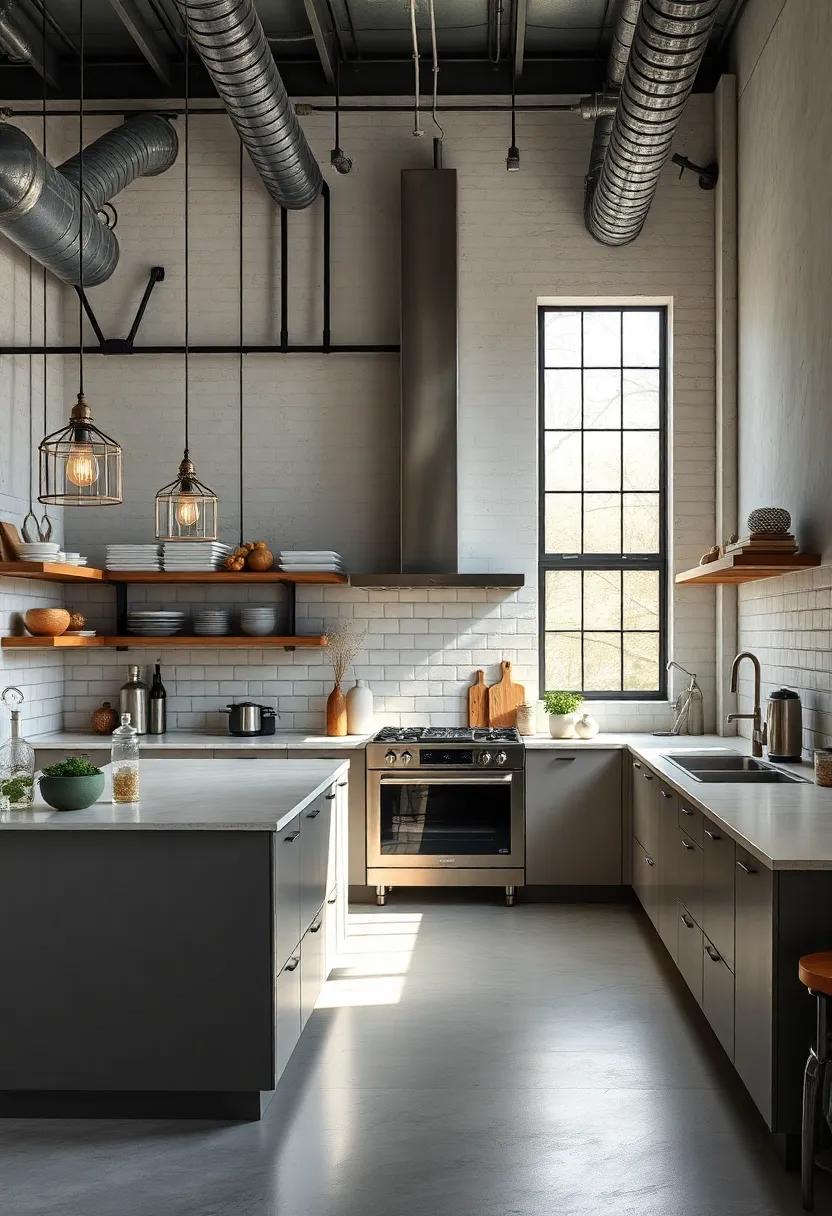
The intricate dance of metal finishes plays a pivotal role in crafting the distinctive allure of industrial spaces, particularly in kitchen design. These finishes serve not only as protective layers but also as bold statements that enhance the overall aesthetic. From the rugged charm of brushed steel to the warm embrace of copper, each material brings its unique character and texture to the forefront. The interplay of shiny and matte surfaces creates a captivating visual contrast, while different finishes can effectively highlight architectural elements such as beams, pipes, and cabinetry.
In the realm of color theory, metallic hues can evoke various moods and atmospheres, enriching the tactile experience of the kitchen. A well-chosen palette with accents of antique brass or gunmetal can infuse a sense of sophistication without sacrificing the industrial vibe.Key design elements can include:
- Light Fixtures: Industrial pendant lamps with metal finishes.
- Hardware: Cabinet handles or knobs in diversified textures.
- Appliances: Stainless steel or custom-colored finishes that reflect personality.
Cafe-Style Seating Arrangements That Encourage Social Interaction
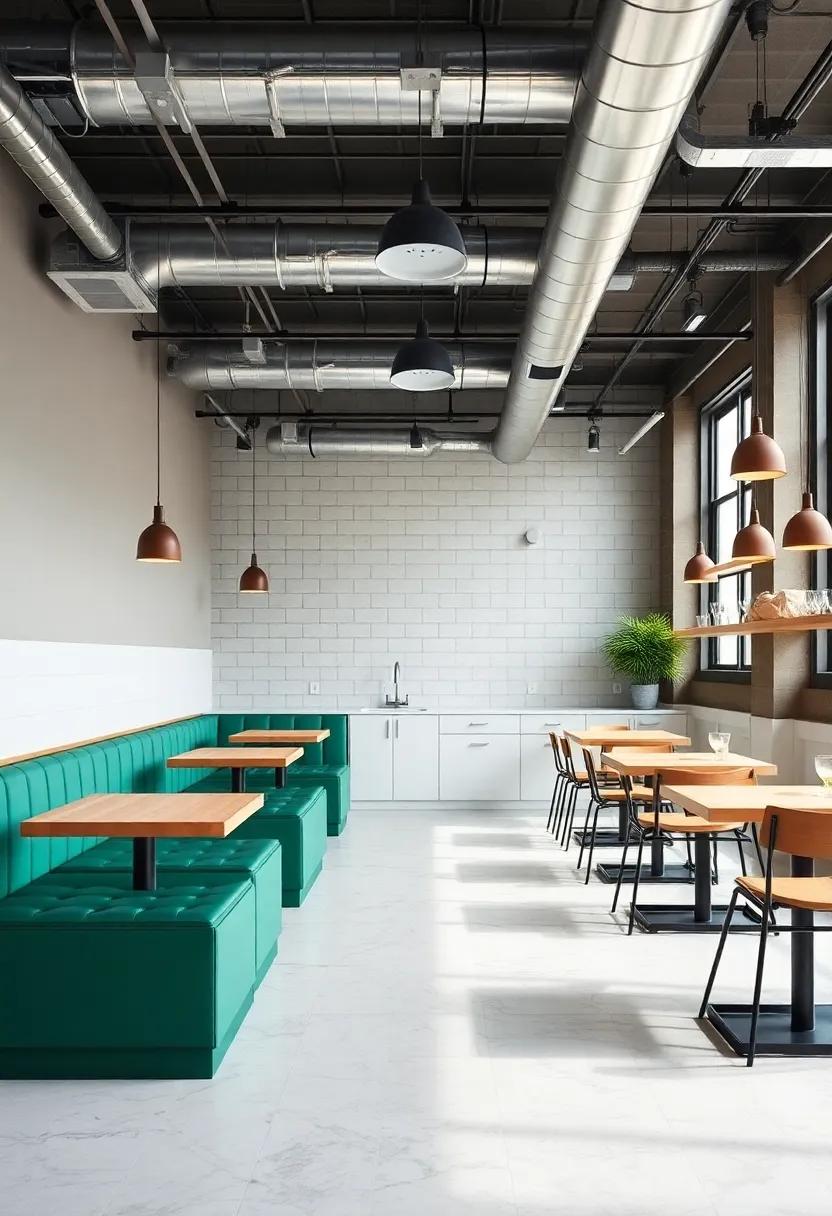
Transforming Small Spaces into Functional Culinary Havens
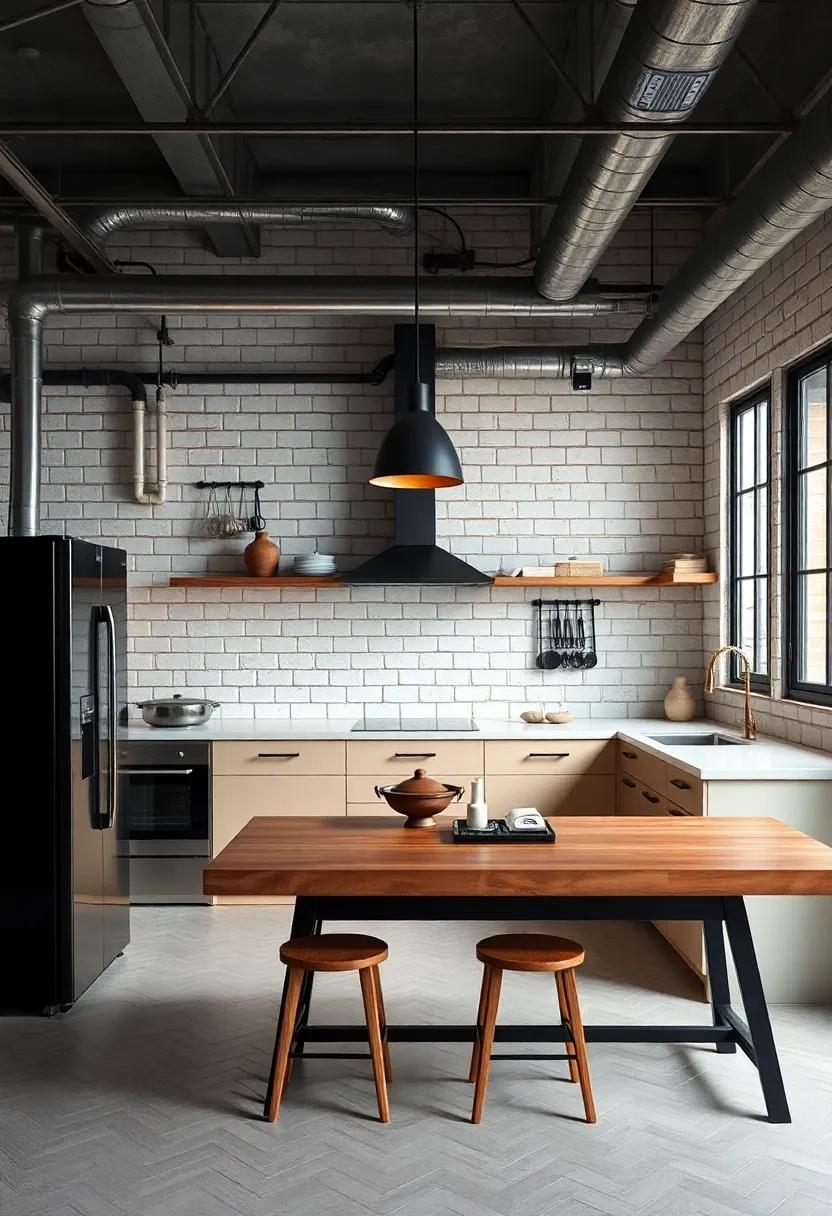
Crafting a functional culinary space in a limited area requires innovative thinking and clever design choices. One of the most effective techniques is using multi-functional furniture that serves more than one purpose. As an example, a kitchen island can double as both a prep area and a dining spot. When selecting your materials, emphasize those that are durable and easy to clean, such as stainless steel and reinforced concrete, which align perfectly with an industrial aesthetic. Incorporating open shelving not only maximizes vertical space but also allows for displaying stylish kitchenware, adding character to your space while keeping essentials within easy reach.
Another strategy involves the thoughtful use of color and lighting to create an inviting ambiance. Opt for a palette that includes deep hues accented by metallic fixtures to enhance the industrial feel while making the space seem larger.Adequate lighting is vital; consider installing pendant lights over work areas and LED strips under cabinets for both functionality and style. To effectively manage your ingredients and tools, utilize clear containers and wall-mounted racks, ensuring that everything is practically organized but also easy to access.Combine these elements to create a small kitchen that is not only visually striking but also perfectly equipped for culinary adventures.
showcasing Unique Focal Points in Kitchen Islands and Workstations
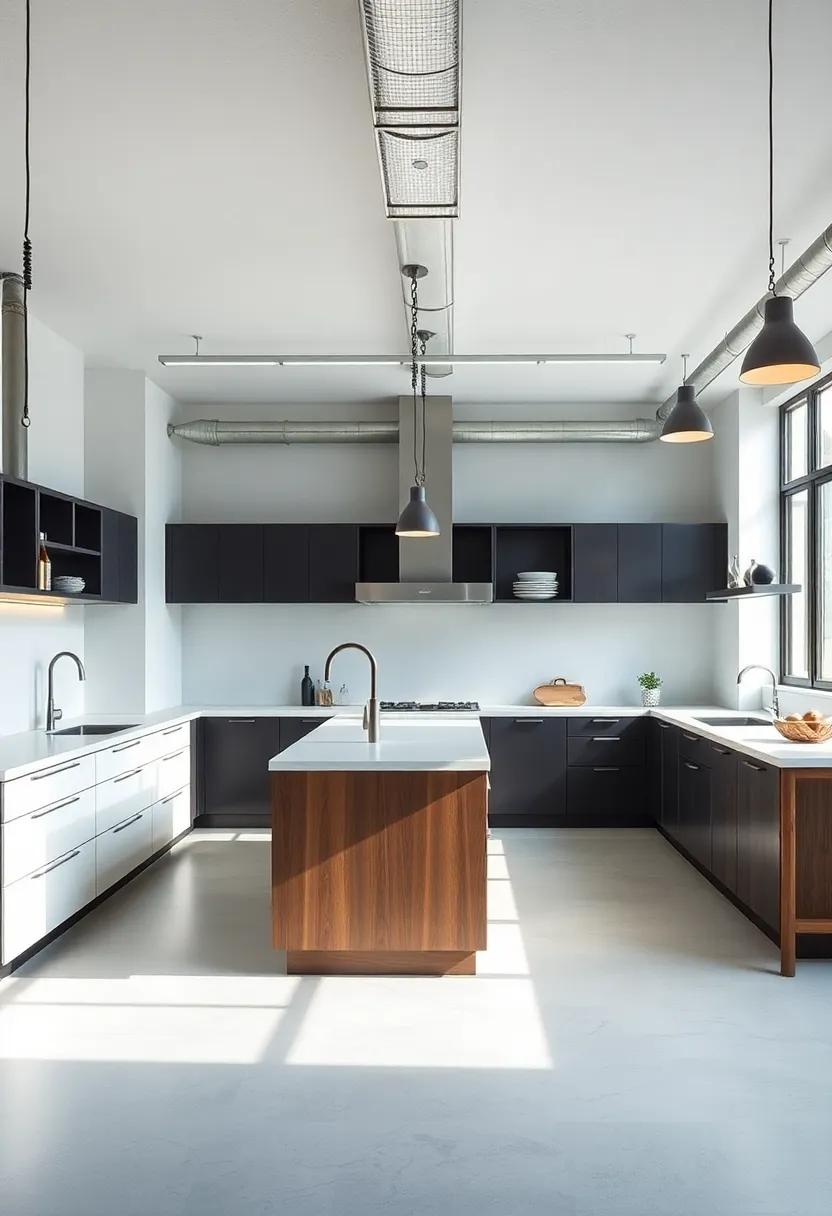
In the realm of industrial kitchen design,the kitchen island emerges as a central masterpiece,showcasing functional artistry. It serves not only as a prep station but also as a space for creativity and gathering, combining aesthetics with practicality. Elements such as exposed metal accents,reclaimed wood surfaces,and integrated lighting invite an industrial vibe while providing the perfect backdrop for culinary experiments and social interactions. Consider including features like:
- Mixed Materials: Balance sleek stainless steel with warm wood to create a rich texture.
- Built-in Appliances: Hideaway refrigerators or cooktops can maintain clean lines while enhancing functionality.
- Unique Seating Arrangements: Metal stools or benches with cushions create comfort without sacrificing style.
- Smart Storage Solutions: Open shelving with pipe supports offers a distinctive look while ensuring accessibility.
Along with kitchen islands, dedicated workstations can amplify the efficiency of cooking spaces, especially in the busy environment of a kitchen. Tailored to meet specific culinary needs, these zones allow for seamless workflow while doubling as design elements. For example, a butcher block workstation, complemented by an overhead pot rack, not only enhances usability but also adds visual interest. Consider offering features such as:
| Feature | Description |
|---|---|
| Task Lighting | Focused illumination aids productivity, enhancing both visibility and ambiance. |
| Functional Knives Rack | Stylish display for tools adds character while ensuring easy access. |
| Integrated Waste Disposal | Seamlessly built-in bins maintain cleanliness without compromising style. |
Merging Indoor and Outdoor Spaces for an Organic Kitchen Experience

Incorporating outdoor elements into kitchen design fosters a seamless blend of nature and functionality,enhancing the overall cooking experience. Emphasizing an organic aesthetic, consider integrating large windows or sliding glass doors that open onto patios or gardens, allowing natural light to flood in while connecting you with the outdoors. Use materials like natural wood, stone, and metal accents to reflect the beauty of the surrounding environment. By carefully selecting color palettes inspired by nature, such as muted greens, earthy browns, and sky blues, you create a serene space that feels cohesive with its outdoor counterpart.
To further enhance this connection, think about adding herb gardens or vertical planters directly into your kitchen design. This not only serves as a style statement but also provides fresh ingredients right at your fingertips. Consider designs with open shelving that displays your culinary plants alongside dishware, allowing for a functional yet aesthetically pleasing arrangement. Additionally, using outdoor furniture pieces, such as stools or benches, made from weather-resistant materials can create an inviting vibe that encourages both cooking and socializing amidst nature’s embrace.
Textured Flooring Options That elevate Industrial Kitchen Design
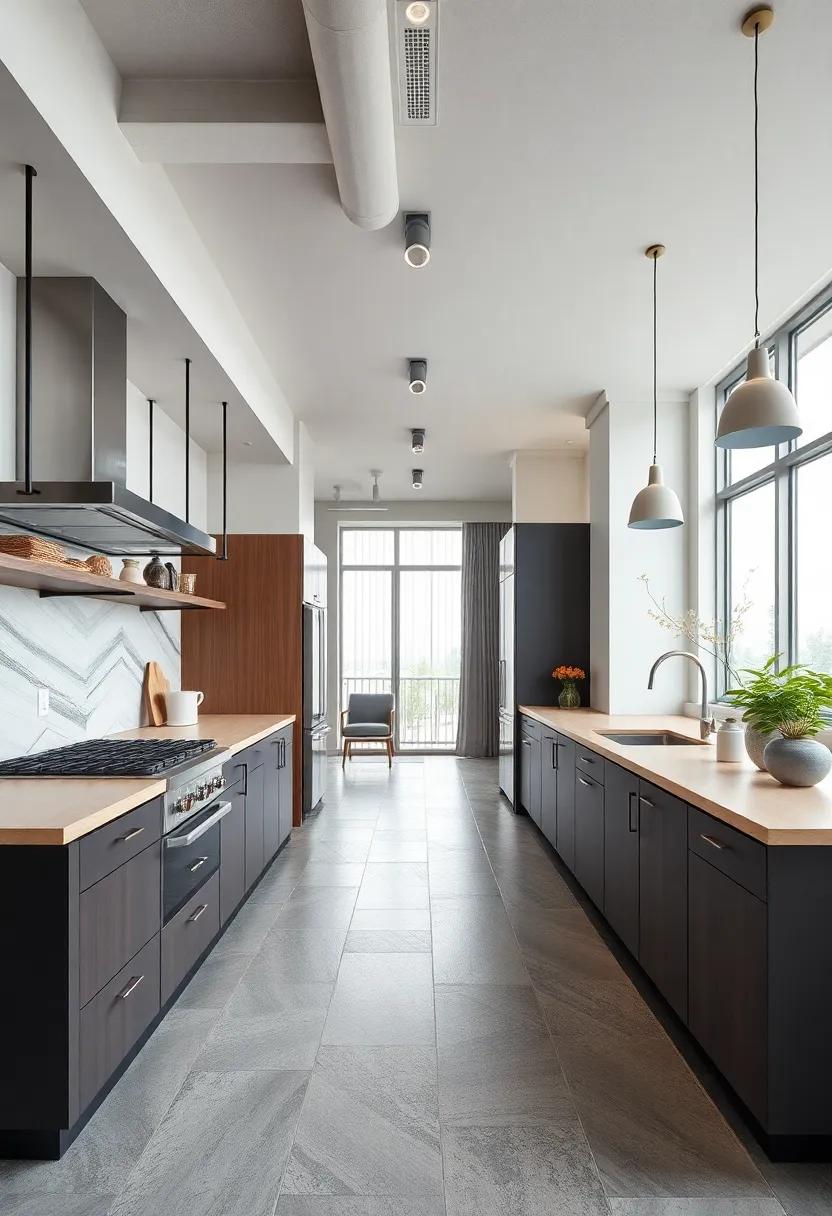
Flooring is a crucial element in industrial kitchen design, serving both aesthetic and practical purposes. When choosing textures, it’s essential to consider materials that can withstand the demands of a busy kitchen while contributing to the overall ambiance. Options like stained concrete, exposed brick, and textured vinyl not only provide a robust surface but also add a layer of depth and character to the space. The unique imperfections found in these materials enhance the industrial aesthetic, creating a complex yet rugged atmosphere, perfect for culinary creativity.
Incorporating varying textures can lead to a visually dynamic environment. Cork flooring, as an example, offers a warm touch while being environmentally friendly and exceptionally durable. Similarly, terrazzo or epoxy finishes can introduce unique patterns and colors, making them standout features in the kitchen. To provide a clear comparison of these options, here’s a helpful overview:
| Material | Texture | Durability | Maintenance |
|---|---|---|---|
| Stained Concrete | Smooth with some variations | High | Low |
| Cork | Soft and porous | Medium | Medium; requires sealing |
| Exposed Brick | Rough and textured | high | Low; needs occasional cleaning |
| Terrazzo | Smooth with flecks | High | Low |
| Textured Vinyl | Varies; can mimic other materials | Medium | low |
Choosing the Right Color Palette to Define Your Industrial Kitchen Style
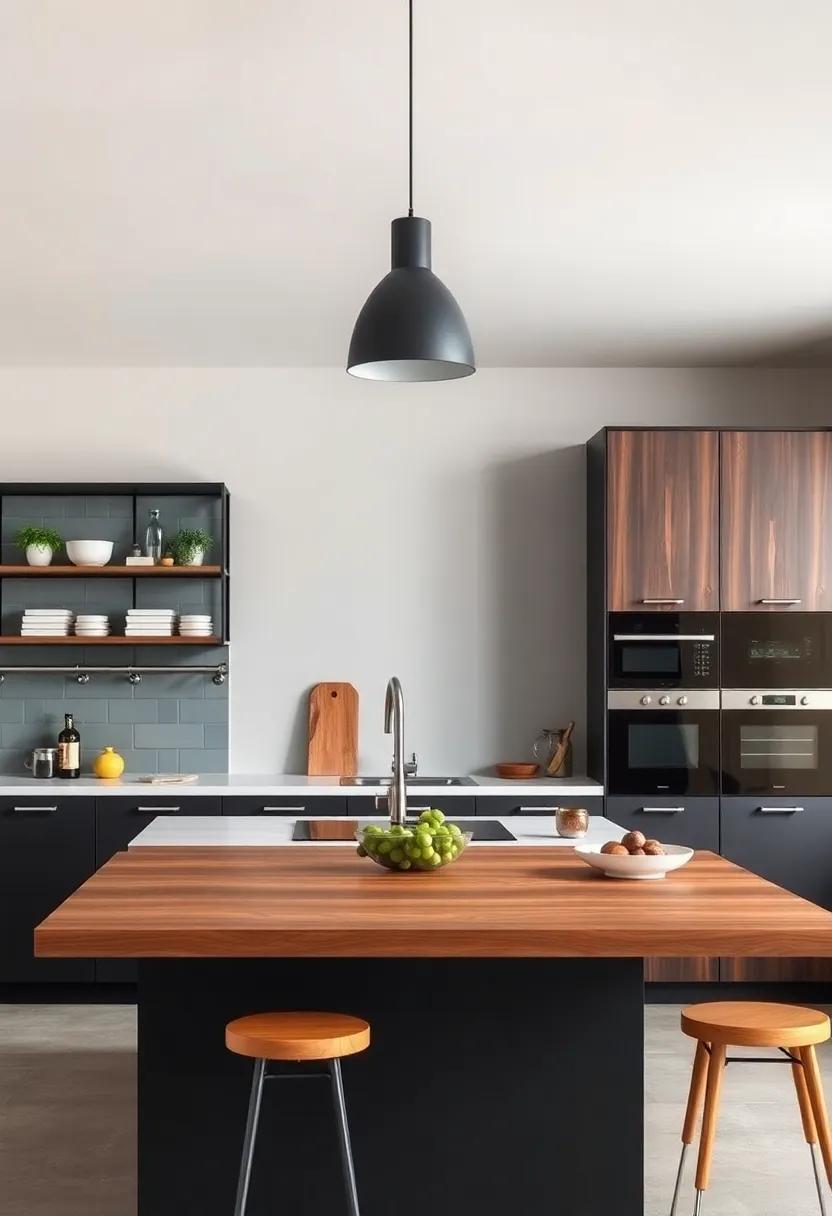
When defining the aesthetic of an industrial kitchen, the color palette plays a pivotal role. A successful combination of hues can emphasize the raw, edgy nature of industrial design while ensuring a cohesive and inviting atmosphere. Consider balancing neutral tones like cool greys and warm browns with bold accents that can include deep blues, rich greens, or even striking reds. These highlights can be introduced through appliances, bar stools, or lighting fixtures, creating focal points that draw attention without overpowering the rustic charm inherent in materials like reclaimed wood and stainless steel.
To help you visualize and select your color combinations, you can create a simple table to explore possible palettes. Incorporating complementary shades can enhance the overall look of your space:
| Base Colors | Accent Colors |
|---|---|
| Charcoal Gray | Mustard Yellow |
| Brick Red | Teal |
| Soft Beige | Olive Green |
| Steel blue | Burnt Orange |
Choosing the right colors not only reflects your personal style but also enhances the dynamic texture and functional appeal of your kitchen. By carefully curating your colors, you can underscore the industrial roots while creating a space that feels modern and livable.From feature walls to cabinetry, each element should contribute to the overall narrative of a uniquely styled industrial kitchen.
Harnessing Natural Light to Highlight Kitchen features and Details
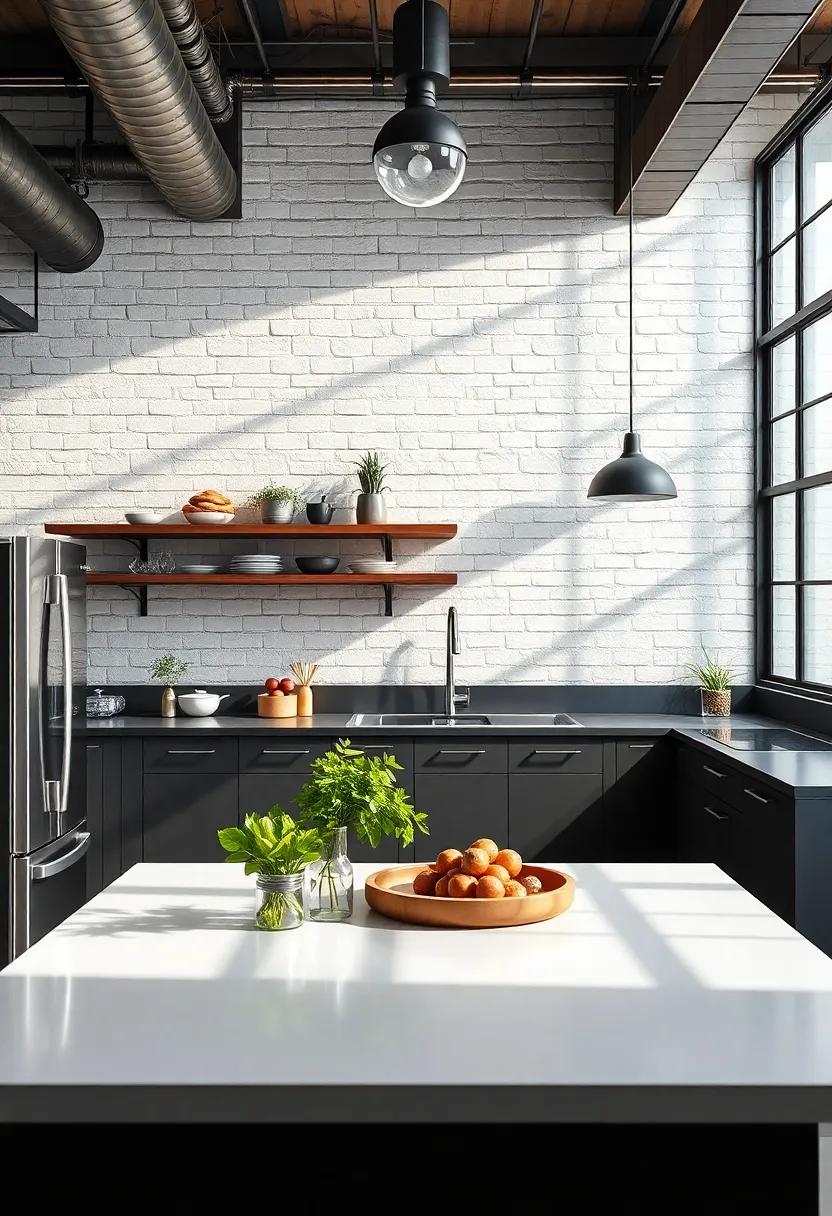
Embracing the power of natural light can dramatically enhance the aesthetic appeal of an industrial kitchen. Large windows and skylights are not only functional but also serve as beautiful focal points that allow sunlight to dance upon surfaces, highlighting the rich textures of your materials. The interplay of light and shadow emphasizes the rawness of exposed brick or the sleek finish of stainless steel,creating an invigorating atmosphere that uplifts the entire space. To optimize this effect, consider:
- Strategic window placement: Position windows where thay can capture the most light throughout the day.
- Reflective surfaces: Incorporate metallic finishes and glossy tiles that bounce light around the room.
- Translucent elements: Use frosted glass in cabinet doors or partitions to diffuse light gently.
Additionally, layering light sources can complement the natural illumination, ensuring that every feature in your kitchen shines. Pendant lights over work areas, under-cabinet lighting, and subtle accent lights can work harmoniously with daylight to create depth and warmth. It’s essential to consider the hue of the artificial lighting too, as warm tones can enhance the cozy feel of your kitchen while cool tones may align perfectly with a modern, industrial look.Here’s a simple comparison to consider:
| Lighting Type | Effect |
|---|---|
| Warm white (2700K) | Creates a cozy, inviting atmosphere |
| Neutral White (4000K) | Bright and vibrant, good for task lighting |
| Cool White (5000K) | Modern, crisp, ideal for a sleek industrial look |
Setting the Mood with Music and Soundscapes in Culinary Environments
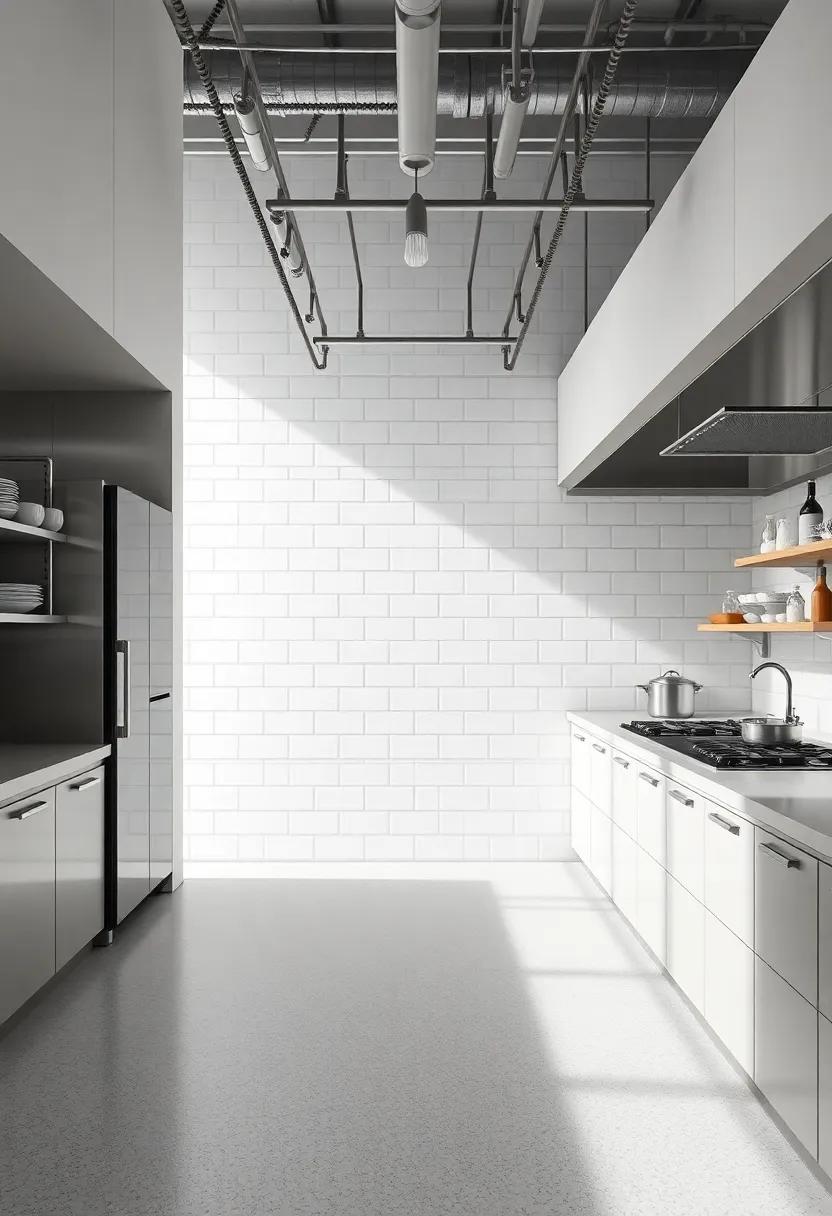
In the realm of culinary environments, the meaning of music and sound cannot be understated. Incorporating soundscapes serves as an invisible thread that weaves together the elements of an industrial kitchen, creating an ambiance that enhances both the experience of cooking and dining. imagine the soft hum of a jazzy tune mingling with the rhythmic chopping of vegetables,or the tranquil sounds of nature whispering through the air. These auditory elements can evoke emotions, stimulate creativity, and foster connection among chefs and patrons alike. Here are some key considerations for utilizing sound in kitchen design:
- Curated Playlist: Choose music that reflects the culinary theme, whether it’s classical for an elegant dining experience or upbeat tracks for a lively café atmosphere.
- Nature Sounds: Incorporate ambient sounds that mimic natural environments,such as birds chirping or waves crashing,for a calming backdrop.
- volume Control: Ensure sound levels are balanced to encourage conversation without overwhelming the senses.
The rhythmic progression of sounds can seamlessly align with the aesthetic of industrial kitchen interiors.For instance, an open kitchen design can amplify the sounds of sizzling pots and pans, enriching the sensory experience and engaging diners who may feel connected to the cooking process. By strategically designing spaces to frame these auditory experiences, a dining establishment can transform into a cohesive multi-sensory adventure. consider the following elements:
| Element | Impact |
|---|---|
| Acoustic Panels | Reduce noise pollution, creating a peaceful environment |
| Live Music | Enhances atmosphere, creating memorable experiences |
| Interactive Cooking Stations | Encourages engagement and connection among guests |
Bringing Nature Indoors with Greenery and Herb Gardens in Kitchens
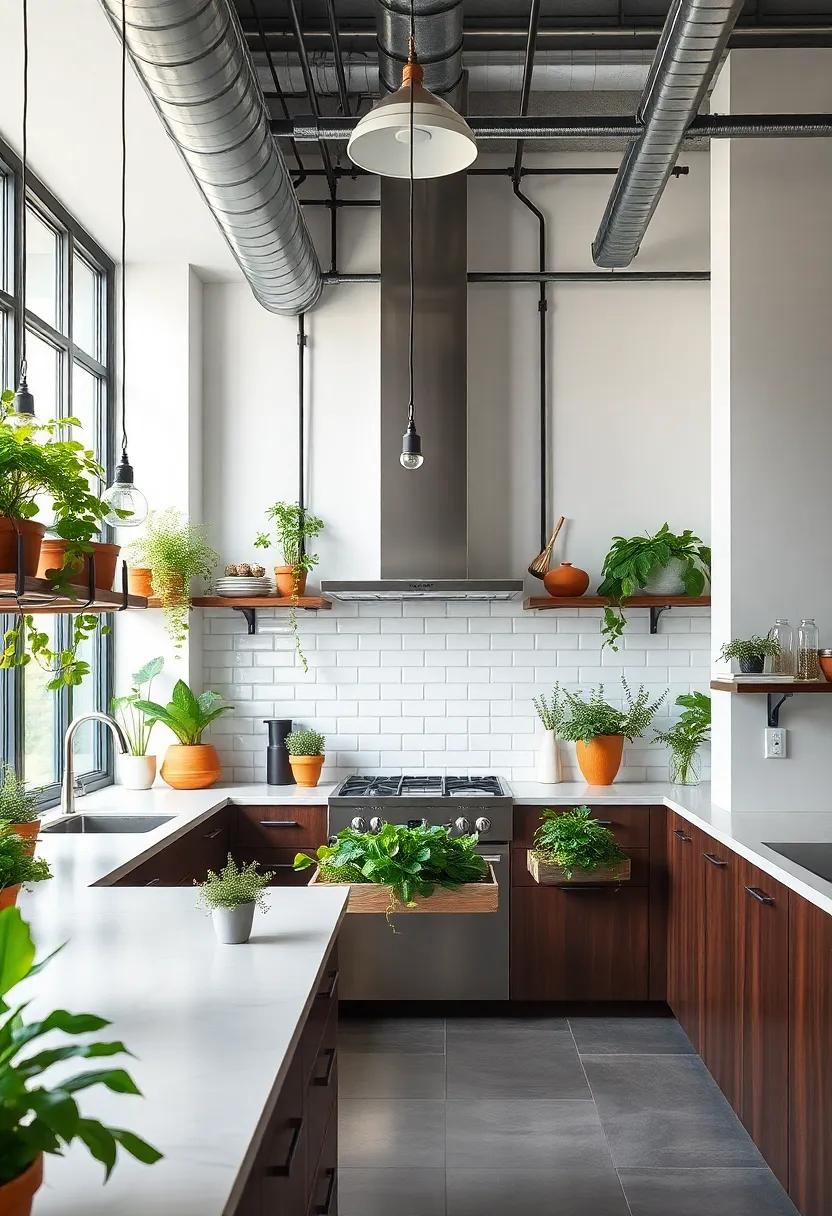
In the realm of industrial kitchen design, infusing natural elements not only elevates aesthetics but also enhances functionality. Imagine replacing sterile countertops with vibrant, lush greenery that breathes life into metal and wood surfaces. incorporating potted plants, such as herbs, not only serves decorative purposes but also offers culinary benefits. Fresh basil, rosemary, and thyme can be snipped directly from their pots, allowing for a farm-to-table experience right in your kitchen. To maximize style and space, consider vertical gardens or wall-mounted planters, perfect for those with limited countertop areas.
Another captivating approach is the establishment of dedicated herb gardens, creating a seamless blend of nature and modern design. Utilizing reclaimed wooden crates or sleek terracotta pots,these mini-gardens can turn an ordinary kitchen into a botanical haven. Additionally, integrating natural light through large windows or glass doors can support the growth of your indoor garden, while providing ample sunlight that enhances the overall ambiance. Here’s a swift overview of popular herbs to consider:
| Herb | Uses |
|---|---|
| Basil | Pasta, salads, pestos |
| Mint | Teas, desserts, cocktails |
| Parsley | garnish, dressings, soups |
| Thyme | Stews, roasted vegetables, meats |
Key Takeaways
the world of industrial kitchen interior design is a captivating blend of functionality and artistry, where raw materials meet refined aesthetics to create spaces that are not only practical but also profoundly inspiring.As we’ve explored, the transformation of these kitchens goes beyond mere utility; it encapsulates a philosophy of embracing the beauty in simplicity and the elegance of ruggedness.
In the pursuit of balancing form and function, designers have the possibility to redefine the culinary experience, making industrial kitchens a canvas for creativity and a hub for innovation. Whether you’re a culinary enthusiast seeking inspiration for your own kitchen or a designer looking to push the boundaries of traditional spaces, the art of industrial design offers limitless possibilities.
As we close this exploration of transforming spaces, remember that each kitchen tells a story—one that reflects the style, passion, and personality of those who create within. May the principles and ideas shared here inspire you to embrace the transformative power of design, merging the practical with the profound in every corner of your culinary domain.
As an Amazon Associate I earn from qualifying purchases.
